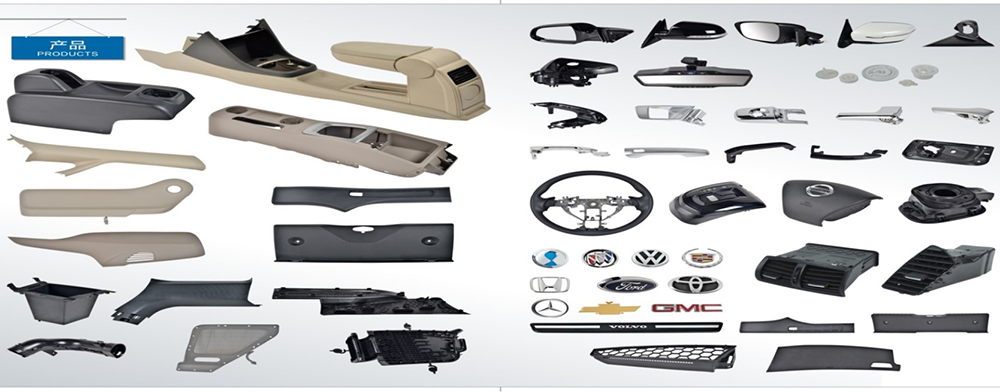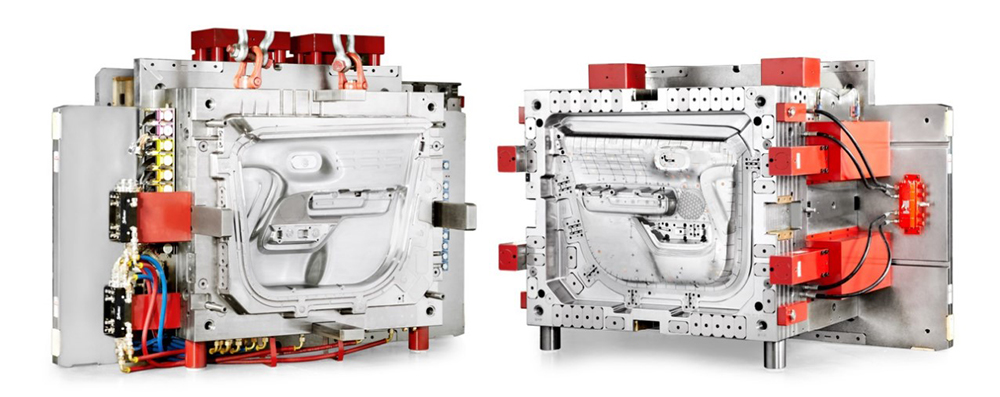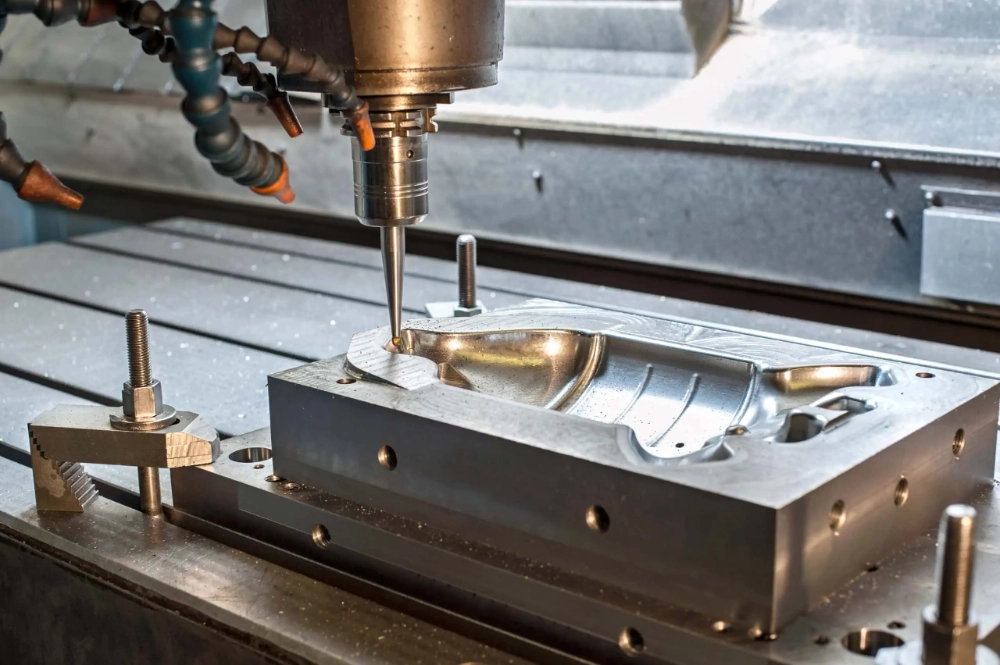Automotive Injection Molding Companies: Market Outlook and Solutions
Introduction :
In the automotive industry, injection molding is a crucial manufacturing method used to produce durable, precise, and high-quality components. Automotive injection molding companies play a vital role in supplying parts that meet stringent industry standards. Huazhi Technology is committed to providing comprehensive injection molding solutions tailored to automotive manufacturers’ unique requirements.
The Growing Demand for Automotive Injection Molding Companies
The automotive industry demands consistent innovation, high-quality parts, and efficient production. Injection molding has emerged as a preferred solution due to its ability to produce complex parts with precision and scalability.
Key Factors Driving Market Growth
- Increased Vehicle Production: As global car production rises, the demand for reliable component suppliers like automotive injection molding companies grows significantly.
- Lightweight Material Trends: Automotive manufacturers are increasingly adopting lightweight plastic components to improve fuel efficiency and meet emission standards.
- Cost-Effective Solutions: Injection molding offers a cost-efficient method for producing complex parts at high volumes.

Key Applications in Automotive Injection Molding
Automotive injection molding companies are responsible for manufacturing a wide range of parts, including:
- Interior Components: Dashboards, door panels, and air vents.
- Exterior Components: Bumpers, grilles, and fenders.
- Under-the-Hood Components: Battery housings, engine covers, and fluid reservoirs.
- Electronic Housings: Instrument clusters, connectors, and wiring enclosures.
Technical Insights: Enhancing Injection Molding Efficiency
To ensure high performance and efficiency in injection molding for the automotive industry, companies leverage various techniques:
1. Advanced Material Selection
Choosing the right material ensures product durability and precision. Automotive injection molding companies carefully evaluate material properties such as tensile strength, impact resistance, and thermal stability to match the demands of different automotive components. For example:
- Polypropylene (PP): Known for excellent chemical resistance and flexibility, ideal for interior trim and battery casings.
- Acrylonitrile Butadiene Styrene (ABS): Offers superior toughness, making it suitable for dashboards and structural supports.
- Polycarbonate (PC): Provides outstanding transparency and high impact strength, perfect for headlight covers and instrument panels.
The following table highlights key material properties and their typical applications in automotive parts:
| Material | Key Property | Automotive Application |
|---|---|---|
| Polypropylene (PP) | Flexible, chemical-resistant | Battery housings, interior trim |
| ABS | Tough, impact-resistant | Dashboards, structural parts |
| Polycarbonate (PC) | Transparent, high strength | Headlight covers, instrument panels |
By selecting the appropriate material, automotive injection molding companies ensure parts meet performance standards, ensuring durability, safety, and efficiency. Popular materials include:
- Polypropylene (PP): Excellent impact resistance and flexibility.
- Acrylonitrile Butadiene Styrene (ABS): Ideal for durable interior parts.
- Polycarbonate (PC): Suitable for transparent or high-strength components.
2. Precision Tooling Design
- Utilizing CAD (Computer-Aided Design) and CAE (Computer-Aided Engineering) tools enhances mold design accuracy.
- Simulation software ensures optimal part filling, cooling, and ejection cycles to minimize defects.
3. Process Optimization Techniques
Automotive injection molding companies adopt the following methods for efficient manufacturing:
- Scientific Molding Techniques: Ensuring precise control over temperature, pressure, and cooling rates. For instance, by implementing a closed-loop feedback system, manufacturers can continuously monitor and adjust these parameters, reducing cycle times by up to 15%.
- Automation Integration: Robotic systems improve production speed and ensure consistent part quality. For example, automated pick-and-place robots can handle delicate components with minimal risk of damage.
- Real-Time Monitoring: Sensors track key process parameters such as pressure deviations, material flow rates, and mold temperatures. Companies implementing such monitoring have seen scrap rates decrease by over 20%.
Case Study: Efficient Dashboard Manufacturing
A leading automotive manufacturer sought to improve dashboard part consistency while reducing defects. By implementing scientific molding techniques and automated visual inspection systems, they achieved:
- 15% faster cycle times
- 30% reduction in defective parts
- Enhanced surface finish and dimensional accuracy
- Scientific Molding Techniques: Ensuring precise control over temperature, pressure, and cooling rates.
- Automation Integration: Robotic systems improve production speed and ensure consistent part quality.
- Real-Time Monitoring: Sensors track key process parameters, reducing scrap rates and improving yield.
4. Quality Control and Inspection
Ensuring product reliability requires rigorous testing procedures, such as:
- 3D Scanning and Imaging for accurate part measurement.
- X-ray Inspection for detecting internal defects.
- Tensile and Impact Testing to confirm material durability.
Case Study: Huazhi Technology’s Automotive Injection Molding Solutions

Challenge: A major automotive manufacturer required high-precision dashboard components with a fast turnaround.
Solution: Huazhi implemented:
- Custom-designed molds to meet complex geometric specifications.
- Advanced injection molding machines with automated systems.
- Real-time quality control checks to maintain consistent part dimensions.
Outcome: The client reported a 30% reduction in production time and a 20% increase in part durability compared to previous suppliers.
Visual Representation of the Injection Molding Process
Step 1: Mold Design
CAD tools used to design precise mold cavities.
Step 2: Material Preparation
Raw plastic pellets are heated and melted.
Step 3: Injection Process
The molten material is injected into the mold cavity at controlled pressure.
Step 4: Cooling
The molded part cools and solidifies.
Step 5: Ejection
The finished product is ejected from the mold and inspected for quality.
Choosing the Right Automotive Injection Molding Partner
When selecting among automotive injection molding companies, consider these factors:
- Industry Experience: Proven expertise in delivering automotive-grade parts.
- Material Knowledge: Understanding the best materials for durability and performance.
- Scalability: Ability to handle large production volumes efficiently.
- Quality Assurance: Robust inspection processes to ensure defect-free parts.

Conclusion: Partner with Huazhi Technology
Huazhi Technology has over 20 years of experience delivering high-precision injection molding solutions for automotive manufacturers. The company adheres to stringent industry standards, including ISO 9001 for quality management and IATF 16949 for automotive sector requirements, ensuring each product meets rigorous safety and performance benchmarks. Our advanced techniques, fast delivery, and commitment to quality make us a trusted partner in the industry.
Contact us today to discuss how our custom injection molding solutions can enhance your automotive manufacturing process.
FAQ: Automotive Injection Molding Companies
1. What materials are commonly used by automotive injection molding companies?
Common materials include polypropylene, ABS, polycarbonate, and nylon, chosen for their durability, heat resistance, and lightweight properties.
2. How do automotive injection molding companies ensure product quality?
They employ advanced testing techniques like 3D scanning, X-ray inspection, and tensile testing to ensure each part meets strict industry standards.
3. What are the advantages of using injection molding for automotive parts?
Injection molding offers precision, fast production speeds, and cost efficiency, making it ideal for mass production in the automotive sector.
4. How can I select the right automotive injection molding partner?
Choose a company with extensive experience, robust quality control, and proven success in delivering automotive-grade parts.
5. Can automotive injection molding companies produce complex part designs?
Yes, modern injection molding technology can create intricate, complex designs with tight tolerances and minimal waste.
6. What industries benefit most from automotive injection molding companies?
Apart from automotive, industries such as aerospace, electronics, and medical devices frequently rely on injection molding for precision parts.
